|
Carnivorous Plant Newsletter
Volume 29, Number 1, March 2000, pages 14 - 21
NEW CULTIVARS
Sarracenia 'Imhotep'
Dionaea 'Dentate Traps'
Dionaea Dentate Traps Group
Dionaea 'Sawtooth'
Pinguicula 'Pirouette'
Utricularia 'Yog-Sothoth'
Utricularia 'Mrs. Marsh'
Utricularia 'Lavinia Whateley'
Utricularia 'Cthulhu'
Sarracenia 'Imhotep'
Davis is in the central valley of California, and experiences long, hot, dry, summers. Each year in October, the Botanical Conservatory at the University of California in Davis (UCD) participates in an enormous plant sale. On the day of the annual sale, the Sarracenia are always a little toasted-shoppers eschew grand S. flava specimens, just because the pitcher tops are burnt and brown. However, one hybrid plant still looks fresh even this late in the season. We call it Sarracenia 'Imhotep'. Of uncertain ancestry, Sarracenia 'Imhotep' has clear influences from S. minor (i.e. a bulging but cylindrical pitcher, a round lid, and fenestrations on the back of the upper third of the pitcher tube). An overall coppery colour, manifested late in the season, is probably also due to S. minor ancestry (Figure 1). The other parent is uncertain, but may be either S. alata or S. rubra. I suspect it is probably S. alata - the large size, enhanced vertical pitcher veining, and pale greenish petals are all consistent with this. This plant must be propagated vegetatively to maintain this complex mix of attributes. It is probable that this plant arrived at UCD via trades with California State University at Fullerton.
I will be the first to admit that more attractive Sarracenia hybrids have been developed, yet this plant has excellent features. Its ability to persist well into a hot, and summer is noteworthy. It is a marvelous plant for casual growers who wish to have perhaps just one pitcher plant in their garden, and would like it to look good all season long.
I nominated the name 'Imhotep' on 2 October 1999, and submitted it for registration on 22 October 1999. The name 'Imhotep' commemorates the fictional character of the same name played by Boris Karloff in the classic horror film, The Mummy. Despite having to weather thousands of years of and and hot climate, this ancient Egyptian priest was still handsome and tanned, albeit a bit veiny.
BARRY MEYERS-RICE • Davis, CA • USA
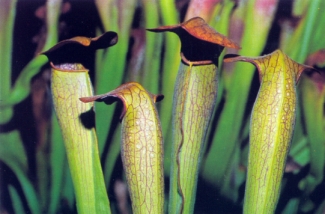
Figure 1: Sarracenia 'Imhotep', photo by Barry Meyers-Rice
Dionaea 'Dentate Traps'
A wild collected Dionaea muscipula plant was selected because its marginal spines were noticeably mutated. Instead of being long and filiform (as is usual), the spines of Dionaea 'Dentate Traps' are short and triangular. This feature is not always apparent on small traps, or those produced early in the season, but the traps on mature plants in full growth are unmistakably dentate (Figure 2).
This plant has been widely distributed in the past under the name "dentata." This name is invalid according to ICNCP rules (Art, 17.9.). Ron Determan (Atlanta Botanical Gardens) has informed me that the plant often distributed under the name "dente" is the same as the "dentata" plant, so the correct name Dionaea 'Dentate Traps' must be used for that plant as well. The cultivar name refers to the form of the marginal spines on the traps; I have both nominated and submitted this name for registration on 20 October 1999. The originator of the plant is probably Leo Song, Jr., who started growing the plant prior to 1990. The preferred method of propagating it is by vegetative means, so the character of the teeth is best maintained.
BARRY MEYERS-RICE • Davis, CA • USA
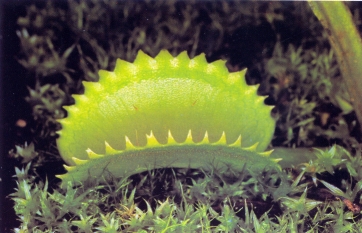
Figure 2: Dionaea 'Dentate Traps', photo by Barry Meyers-Rice
Dionaea Dentate Traps Group
Most Dionaea muscipula plants have traps fringed with marginal spines (often called tentacles). These spines may rarely be as long as the width of a single trap lobe, but they are more typically shorter-perhaps 1/3 the width of a single trap lobe. The spines are filiform, and the thickness of a single spine is much smaller than the distance between spines. Recently, Dionaea cultivars have been registered which have the unifying characteristic of modified spines. In particular, the cultivars Dionaea 'Dentate Traps' (described above), Dionaea 'Sawtooth' (described below), and Dionaea 'Red Piranha' (Read, 1999) all have spines which have been reduced into small teeth. These teeth are much shorter than 1/3 the trap lobe width, and are triangular (and not filiform) in outline (in the cultivars Dionaea 'Sawtooth' and Dionaea 'Red Piranha' the teeth are further denticulate). The Dionaea Dentate Traps Group includes those registered cultivars with this spine modification. This cultivar group does not contain cultivars that have traps mutated so that multiple spines are fused together, unless the individual spines can be identified as being shortened and triangular. The cultivar group name refers to the form of the marginal spines on the traps.
Reference:
Read, E. 1999, New Cultivar Dionaea 'Red Piranha', Carniv. Pl. Newslett. 28:99.
BARRY MEYERS-RICE • Davis, CA • USA
Dionaea 'Sawtooth'
This Dionaea muscipula is of uncertain origin, but has been distributed without an established name. As such, the commonly used name Dionaea 'Sawtooth' is being registered. Dionaea 'Sawtooth' is a remarkable plant in the Dionaea Dentate Traps Group (described above). Its marginal trap spines are reduced to small triangular teeth, as in Dionaea 'Dentate Traps'. Unlike that latter cultivar, however, the teeth of Dionaea 'Sawtooth' are frequently minutely divided into two or more tiny teethlets, so the trap has an almost fringed appearance (Figure 3). Late in the season, the interior of the traps may be deeply red, although this is not visible in young traps (cf. The Savage Garden, Peter D'Amato, 1998, 1st Edition, p67.). The cultivar name refers to the form of the marginal spines on the traps; I both nominated and submitted this name for registration on 20 October 1999.
The preferred method of propagating this plant is by vegetative means, so the character of the teeth is best maintained.
BARRY MEYERS-RICE • Davis, CA • USA

Figure 3: Dionaea 'Sawtooth', photo by Barry Meyers-Rice
Pinguicula 'Pirouette'
This Pinguicula agnata x (moranensis x ehlersiae) hybrid is another product of Leo Song's active hybridization program at California State University at Fullerton. Resulting from a cross made 14 October 1986, this plant has proven itself to be forgiving of cultivation errors and resilient to adverse growing conditions. Its flowers are attractive and clear pink, similar in general plan to P. moranensis but with more rounded petals, akin to those of P. agnata. Mature plants are about 7 cm. in diameter and may produce a few blooms each year. It is the leaves that are the most striking feature of this plant - it has inherited the opalescent pinky-white foliage of P. ehlersiae. In some growing conditions Pinguicula 'Pirouette' becomes so suffused with rich-pink or even red it looks remarkably like a chlorophyll-free saprophyte one might encounter deep in pine woods! Under moderate light, the leaves are very pale pink with a touch of light green (Figure 4).
The leaves this plant produces during the dormant season are smaller and more succulent. Leaf cuttings are best taken with these leaves just before or as the summer leaves begin to emerge. The leaf cuttings root easily. This plant should not be propagated by seed if you wish to maintain the cultivar name attached to it.
Its good looks and easy cultivation make Pinguicula 'Pirouette' an excellent beginner's plant. If you want to try a carnivore on your windowsill, this might be the one to start with! Plants are distributed each year at the UCD Botanical Conservatory plant sale, and are also available at California Carnivores.
The name Pinguicula 'Pirouette' was coined because the neatly overlapping, layered leaves give the impression of a swirling pleated skirt. The intense pink color adds to the skirt impression; the emerging leaves add arms to suggest a ballerina doing a fast turn. This plant name was nominated (by John Brittnacher) on 2 October 1999, and sent for registration (by Barry Meyers-Rice) on 20 October 1999.
JOHN BRITTNACHER, BARRY MEYERS-RICE, LEO SONG • Davis, CA • USA
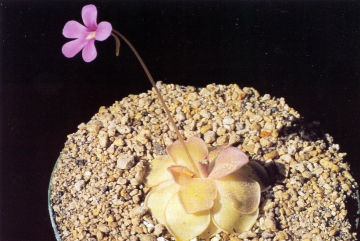
Figure 4: Pinguicula 'Pirouette', photo by Barry Meyers-Rice
Utricularia calycifida 'Yog-Sothoth'
In order to be appreciated, many Utricularia species must be observed on a near-microscopic scale. The flowers are often small, and the leaves are usually tiny. Utricularia calycifida is different. Not only are its flowers moderately large, but compared to most species in cultivation its leaves are gigantic (forgive me for using such a dramatic term for leaves but 5 cm or so long). The leaves of some U calycifida clones are actually showy! Utricularia calycifida has many clones in cultivation with a diversity of flower and leaf forms, so there is great potential for intraspecific hybridization.
I have discussed U. calycifida before, in pages 9-13 of the 21:1-2 issue of Carnivorous Plant Newsletter (1992). In that article I used the tentative, descriptive phrase "purple veins" to describe one commonly cultivated form. This form has petiolate leaves with a oval lamina that are veined throughout with deep purple pigmentation (see Carniv. Pl. Newslett. 21:1-2, p. 10, Figure 1:1). The flowers are large, and the apron-like lower corolla lobe hangs down and nearly completely hides the spur. The corolla is pink, but with a yellow patch (edged in white) on the proximal palate bulge (see Carniv. Pl. Newslett. 21:1-2, p. 12, Figure 3). This plant is being established as the cultivar Utricularia calycifida 'Yog-Sothoth'.
While Utricularia 'Yog-Sothoth' can produce self-fertilized viable seed, to preserve the cultivar name care must be taken to ensure the progeny meet the floral and leaf characteristics described in this article. As such, I recommend vegetative propagation which, like in so many Utricularia, is trivially simple.
The cultivar name was nominated and submitted for registration by me on 22 October 1999. The cultivar epithet notes the potent and enigmatic entity mentioned in various stories by the 1930s author H.P. Lovecraft. The original Yog-Sothoth and the cultivar share features such as peculiar venation, countless sucking mouths, and an insatiable appetite.
BARRY MEYERS-RICE • Davis, CA • USA
Utricularia calycifida 'Mrs. Marsh'
In an article on Utricularia calycifida (Carniv. Pl. Newslett. 21:1-2, p9-13, 1992) I discussed a clone that I referred to as "spotted flower." This unestablished epithet is being abandoned, and the cultivar name Utricularia calycifida 'Mrs. Marsh is being established in its place.
I described the flower of Utricularia 'Mrs. Marsh' in detail in that article, and for convenience I am using the "Figure 2" that appeared on page 12 as a photographic standard. In summary, Utricularia 'Mrs. Marsh' can be recognized by its small white to pale-lilac flower. The corolla lips are decorated with small purplish-brown spots which are sometimes stretched into streaks. The orange-yellow palate splotch is edged in brown. The overall effect is remarkably similar to the patterning on some frogs or tiger cowrie sea shells (Cypraea tigris). The leaves are strap shaped, and are purplish only when growing rapidly.
This plant self fertilizes readily and produces seed which breed true. Some seedlings are vigorous than others, so this plant is best reproduced vegetatively.
Utricularia calycifida 'Mrs. Marsh' was first given to me (without a cultivar name) by the noted Arizonan carnivorous plant grower, Paul McMillan. The cultivar name was nominated and submitted for registration by me on 22 October 1999. The name commemorates the second wife of Captain Obed Marsh, from H.P, Lovecraft's tale, The Shadow Over Innsmouth. This mysterious figure was known for her froglike appearance and strange affinity to water.
BARRY MEYERS-RICE • Davis, CA • USA
Utricularia calycifida 'Lavinia Whateley'
As I mentioned in a previous note (Carniv. Pl. Newslett. 22:3, p.56, 1993), a white-variant of Utricularia calycifida exists and has been grown with the name Utricularia calycifida "White Flower". This epithet has not been registered, and since it is overly ambiguous, I propose instead the name Utricularia calycifida 'Lavinia Whateley'. This cultivar's flower is similar in form to that of Utricularia calycifida 'Yog-Sothoth', except instead of predominantly pink, the flower is white. The yellow palate splotch is present. The leaf veins are not heavily tinted purple. I recommend vegetative propagation which is easy with this plant, and will ensure vigorous progeny with no loss of cultivar characteristics.
The cultivar name was nominated and submitted for registration by me on 22 October 1999. The cultivar epithet honors the peculiarly pale, white-haired woman who appeared in H.P. Lovecraft's short novel, The Dunwich Horror.
BARRY MEYERS-RICE • Davis, CA • USA
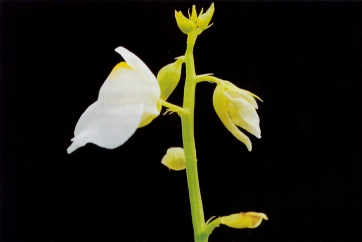
Figure 5: utricularia 'Lavinia Whateley', photo by Barry Meyers-Rice
Utricularia calycifida 'Cthulhu'
As I mentioned in a previous note (Carniv. Pl. Newslett. 22:3, p.56, 1993), an interesting, mauve colored form of U. calycifida is particularly noteworthy. This plant bears rounded, purple- leaves as does Utricularia calycifida 'yog Sothoth'. The flowers are also large as in that cultivar, but differ in the details. First, the palate bulge is more rounded, pronounced and distinct from the rest of the lower corolla lip. Second-and most obviously-the yellow palate splotch is larger and surrounded by numerous anastomosing pale veins. The mauve-pink that contrasts with the pale veins is more saturated than the pink that colors the rest of the flower. This plant should be propagated by vegetative means in order to maintain its delightful characters faithfully.
The epithet 'Mauve Flower' had not been established, so I proposed instead the name Utricularia calycifida 'Cthulhu'. The cultivar name was nominated and submitted for registration by me on 22 October 1999. The cultivar epithet is chosen in commemoration of the fictional creature described by H.P. Lovecraft. Like its namesake cultivar, Cthulhu (pronounced "k-THOO-loo" was a denizen of a semi-aquatic land, and was endowed with countless stolon-like tentacles.
BARRY MEYERS-RICE • Davis, CA • USA
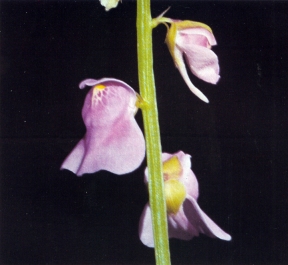
Figure 6: Utricularia 'Cthulhu', photo by Barry Meyers-Rice
|

